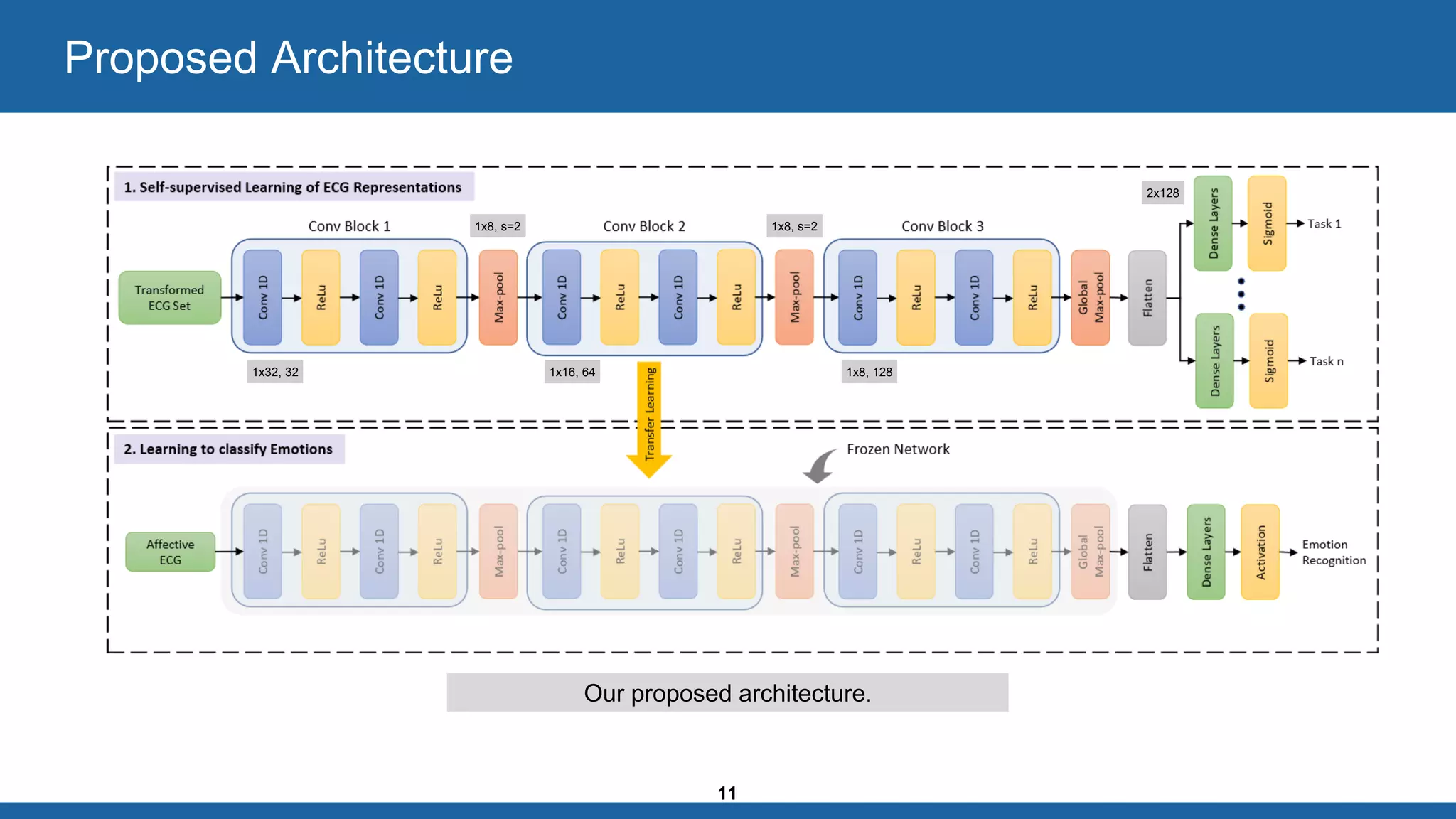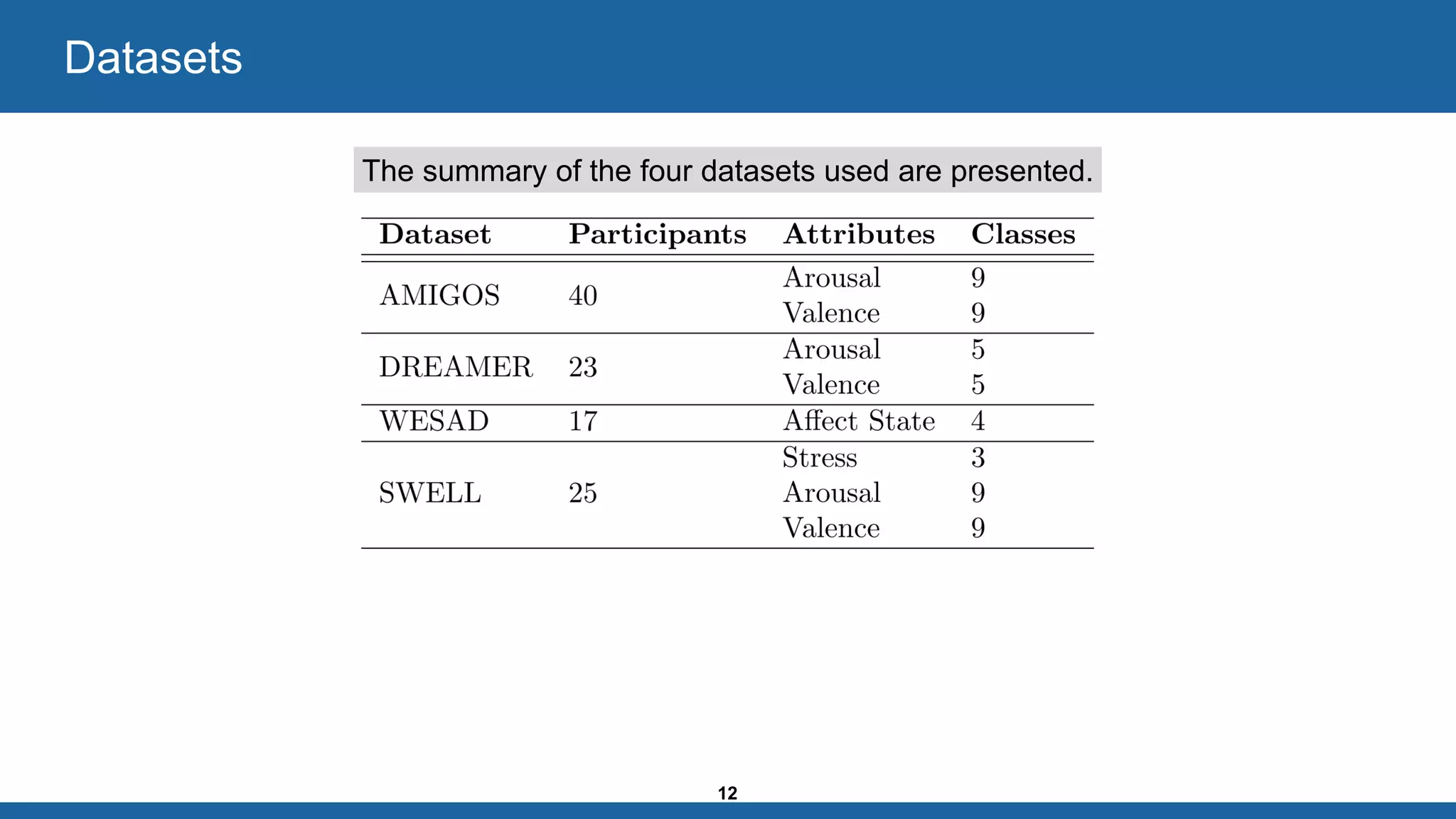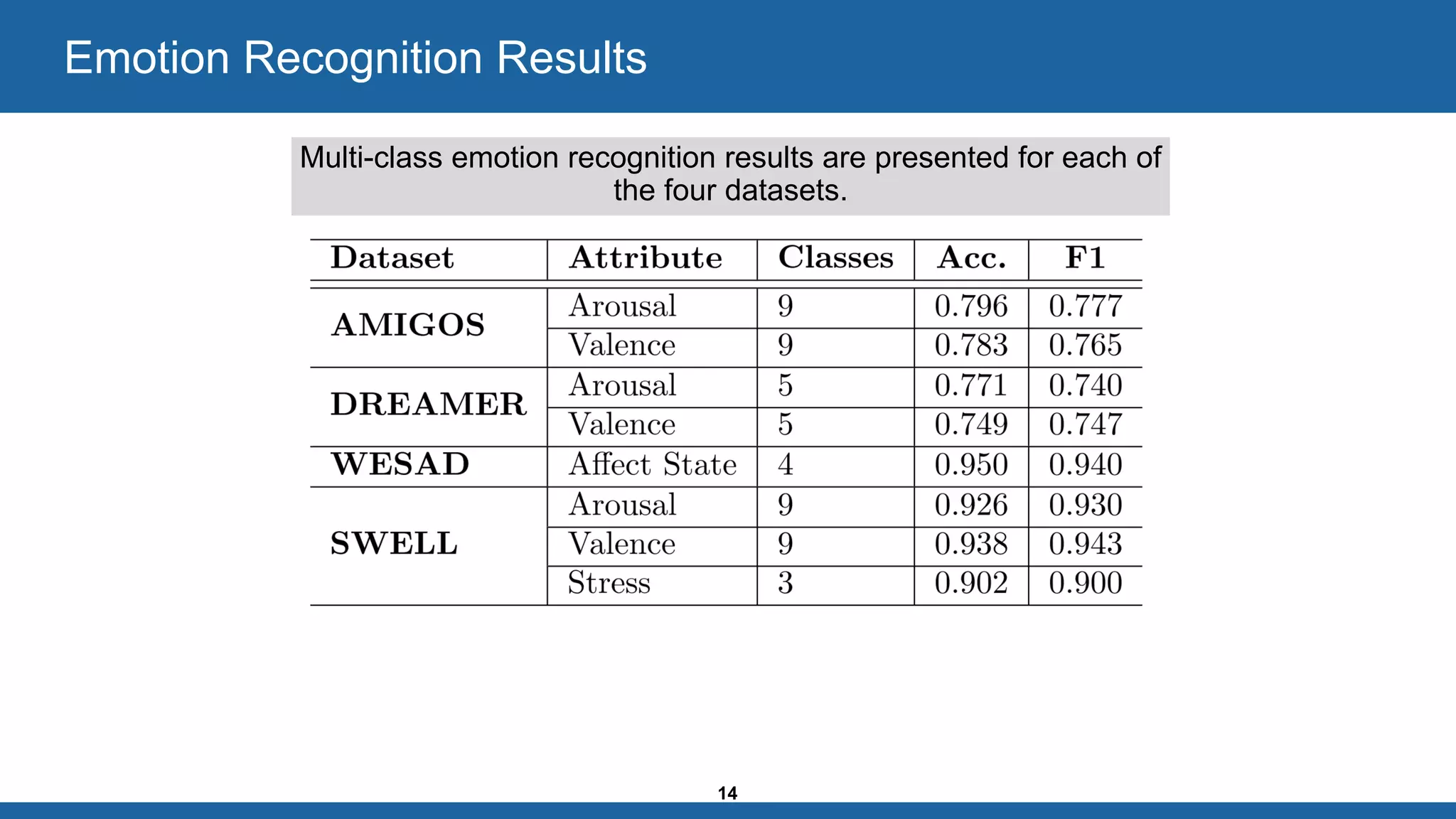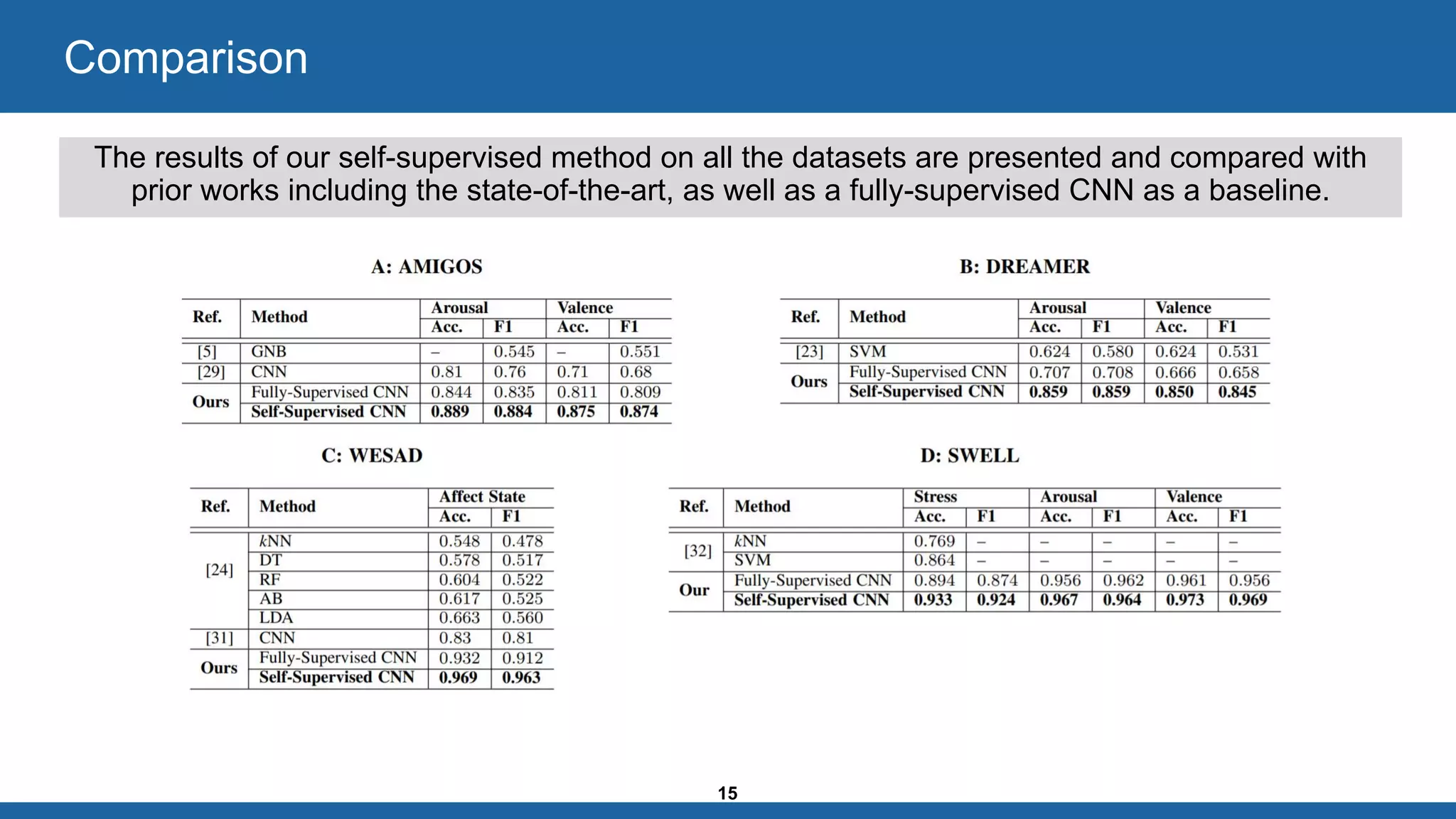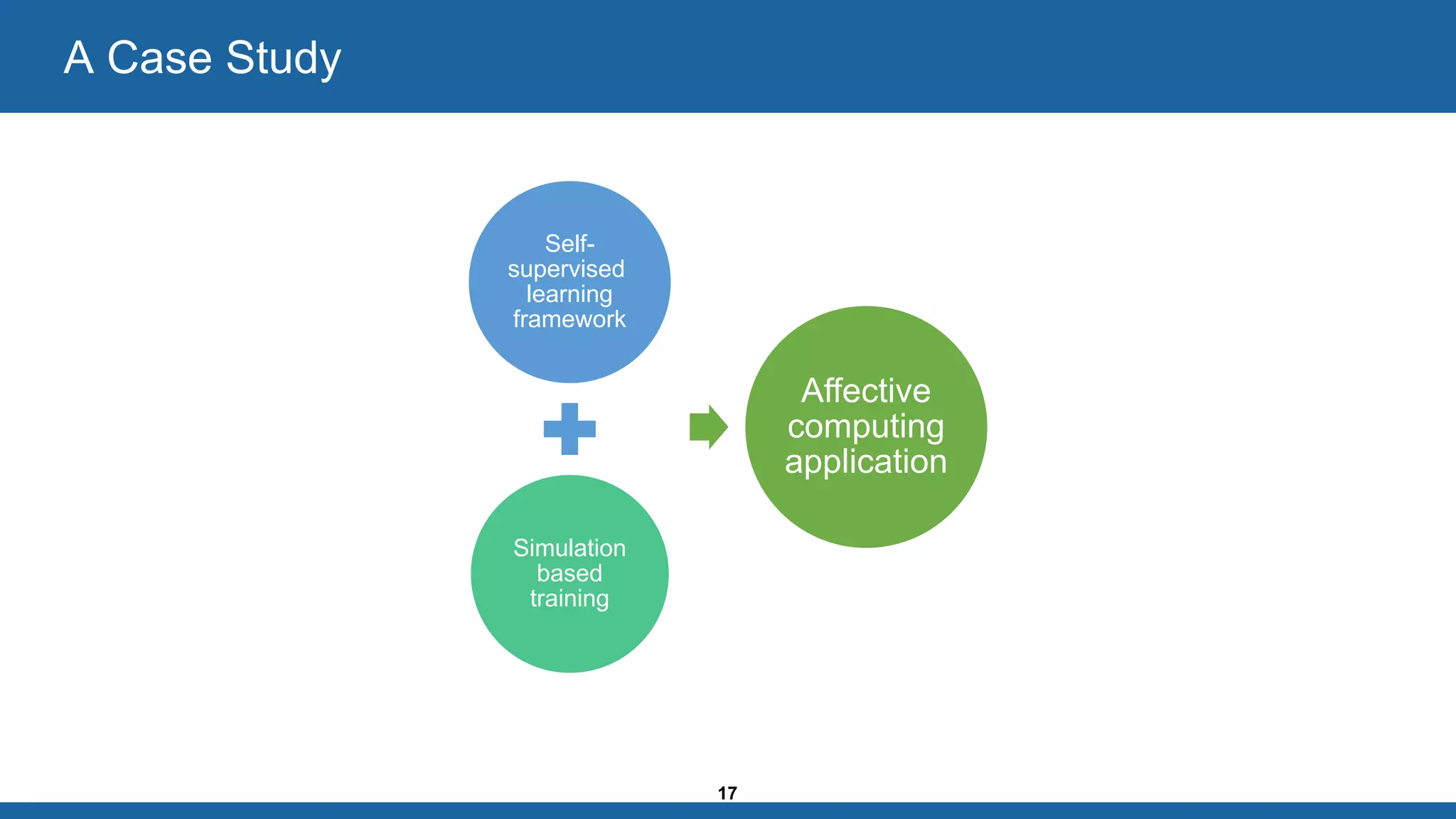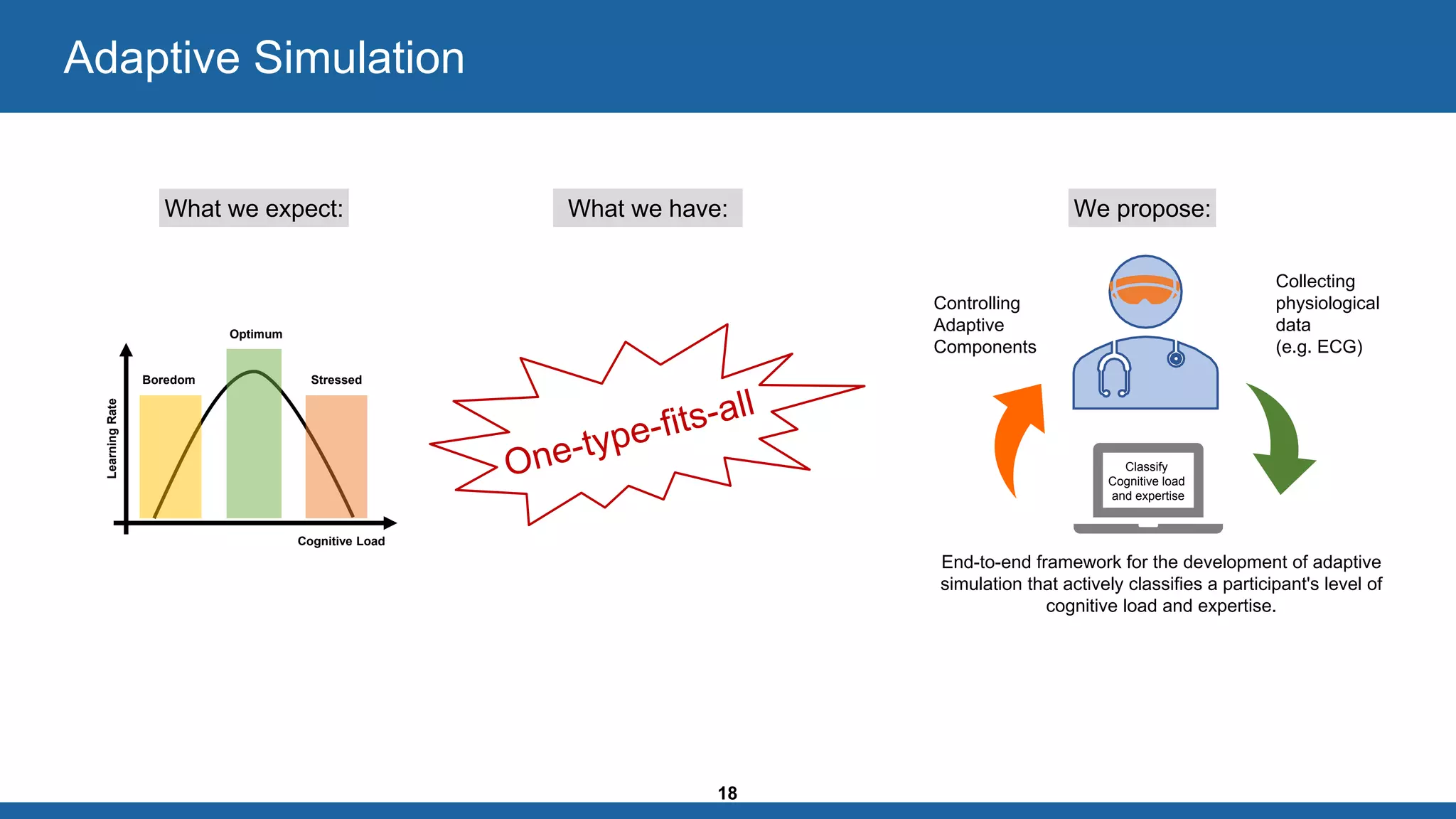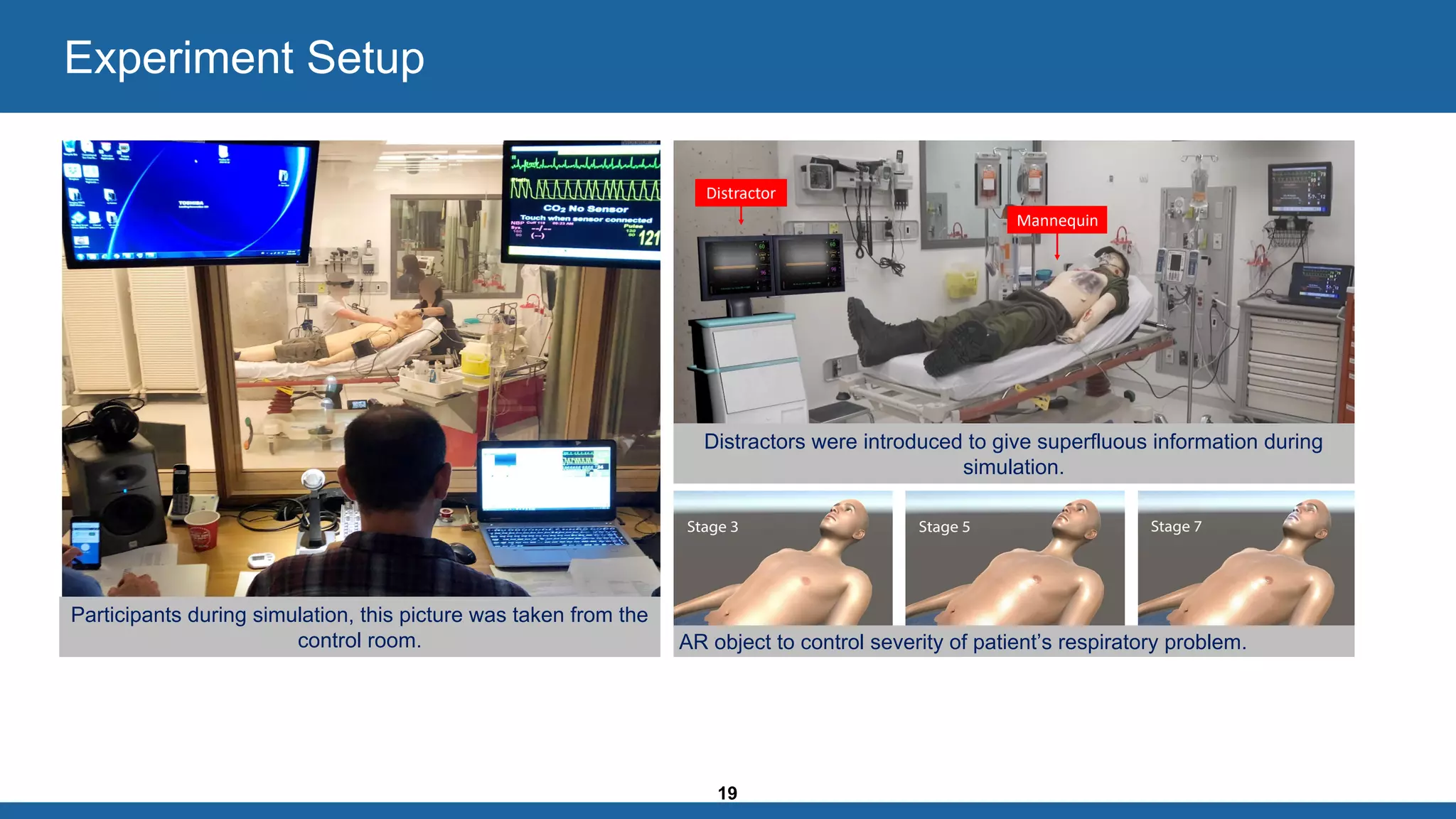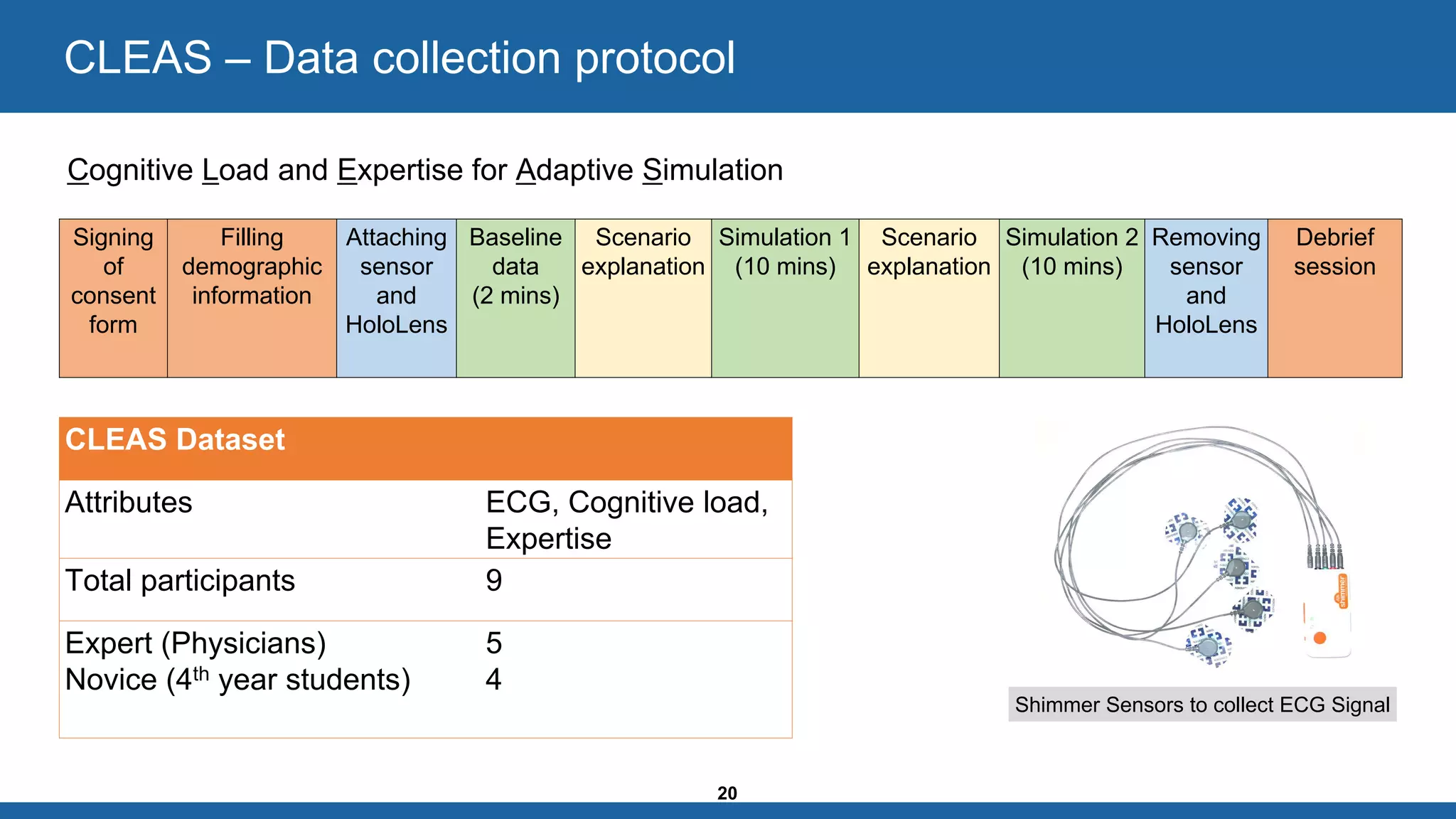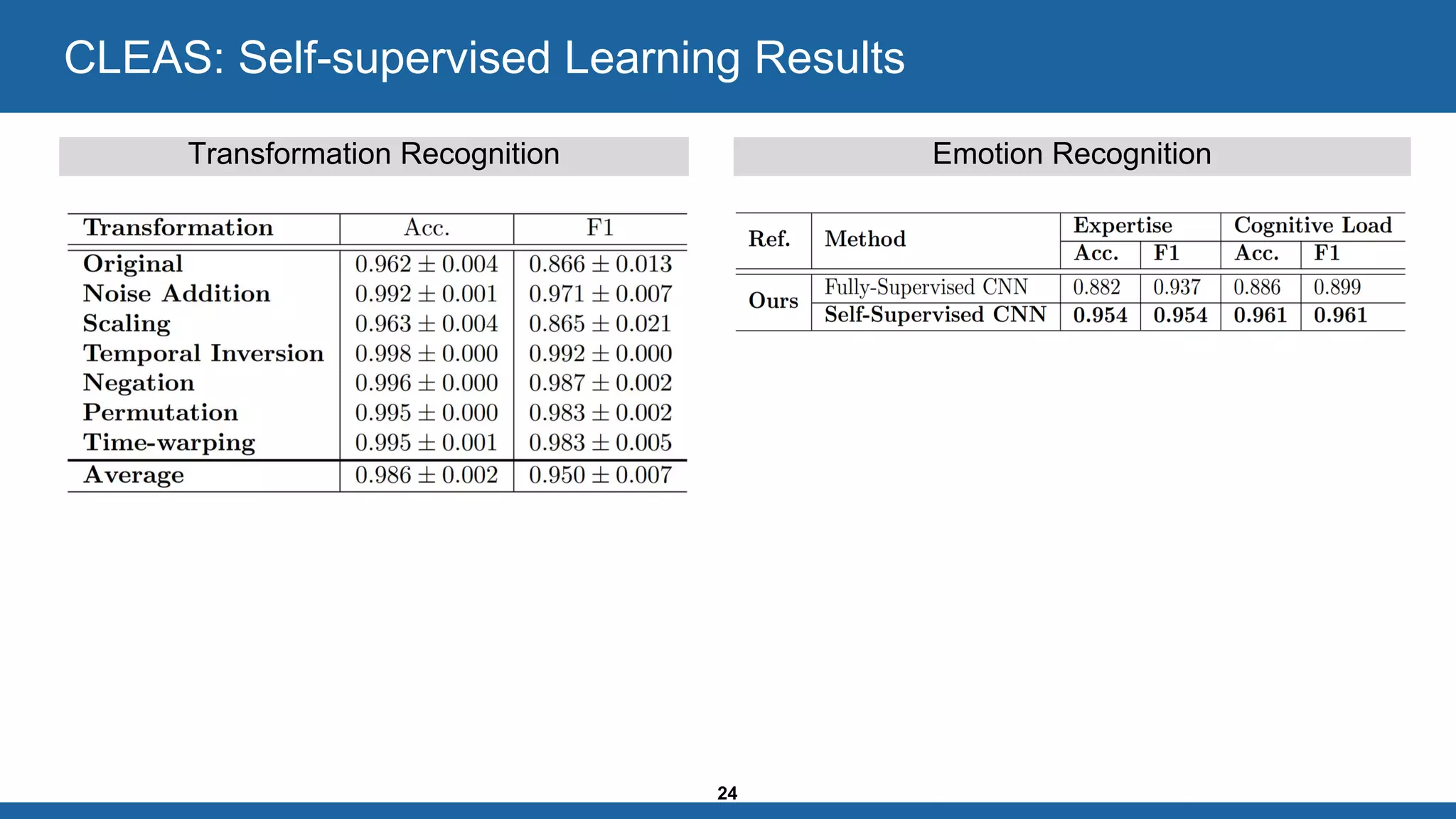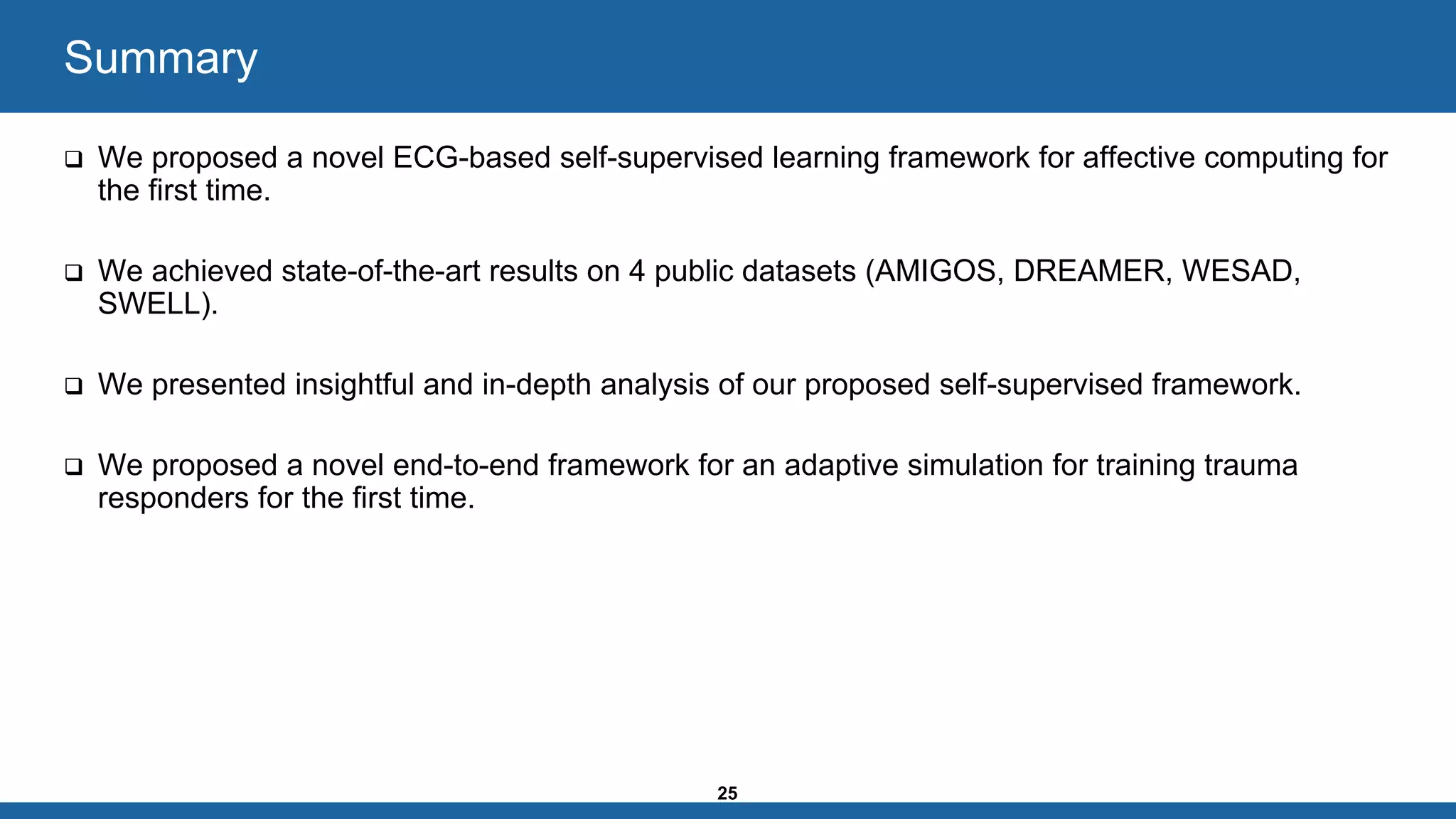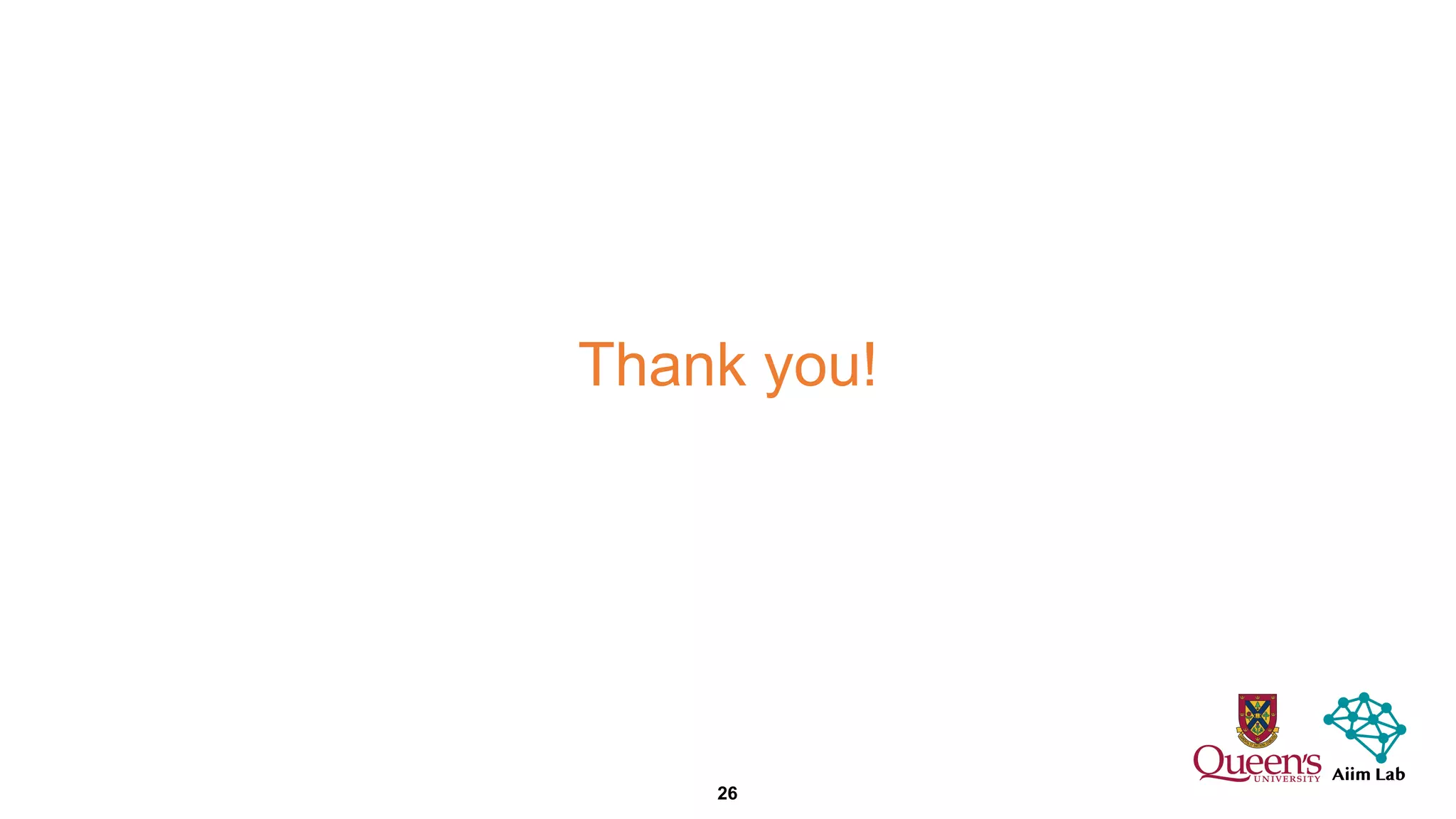The document presents a self-supervised learning framework for ECG representation aimed at improving emotion recognition, achieving state-of-the-art results across four public datasets. It highlights the limitations of fully-supervised learning and emphasizes the advantages of self-supervised approaches, such as high-level generalizations from automatically generated labels. Additionally, the document discusses a novel adaptive simulation framework for training trauma responders that dynamically adjusts based on cognitive load and expertise.

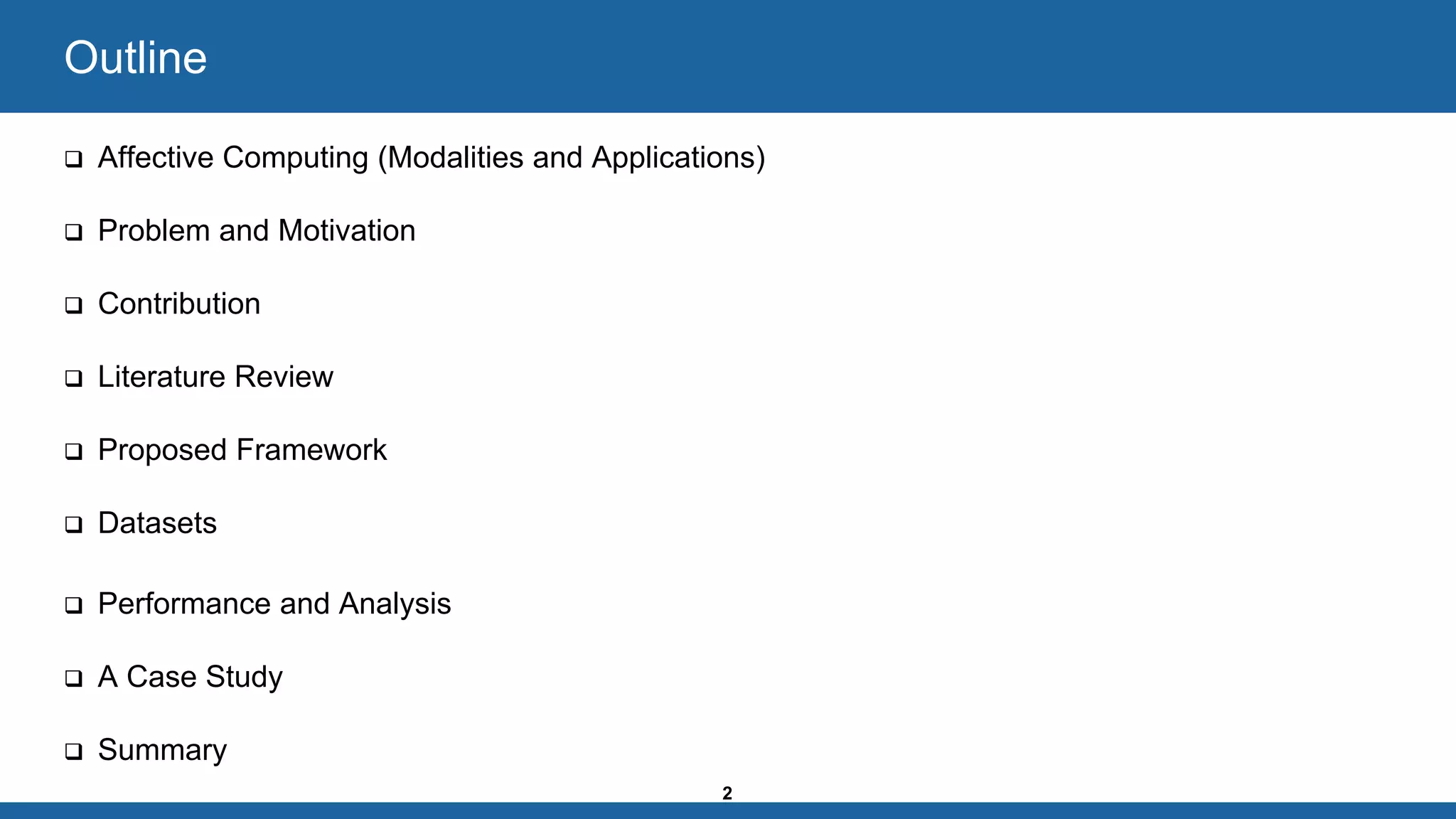



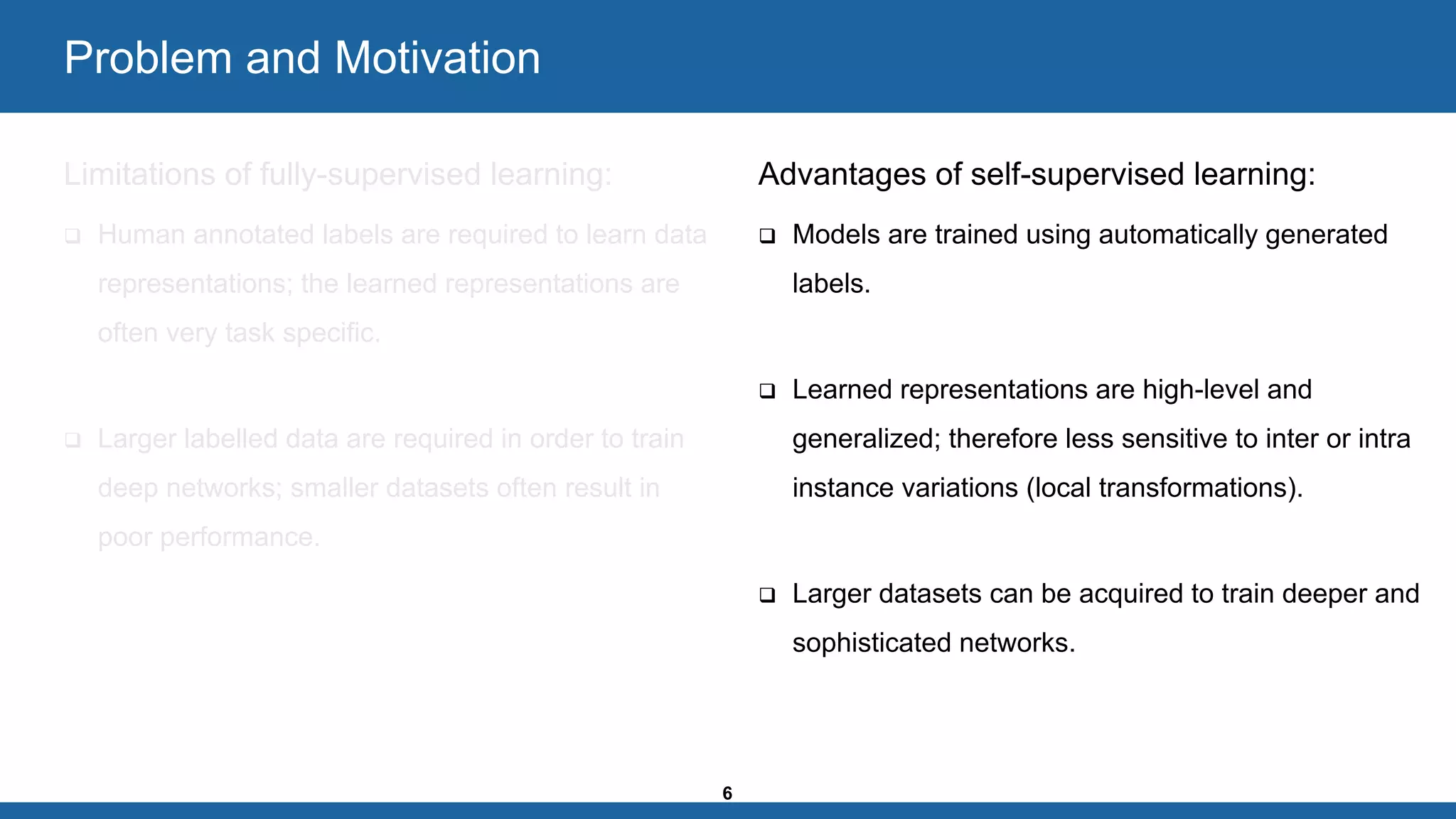
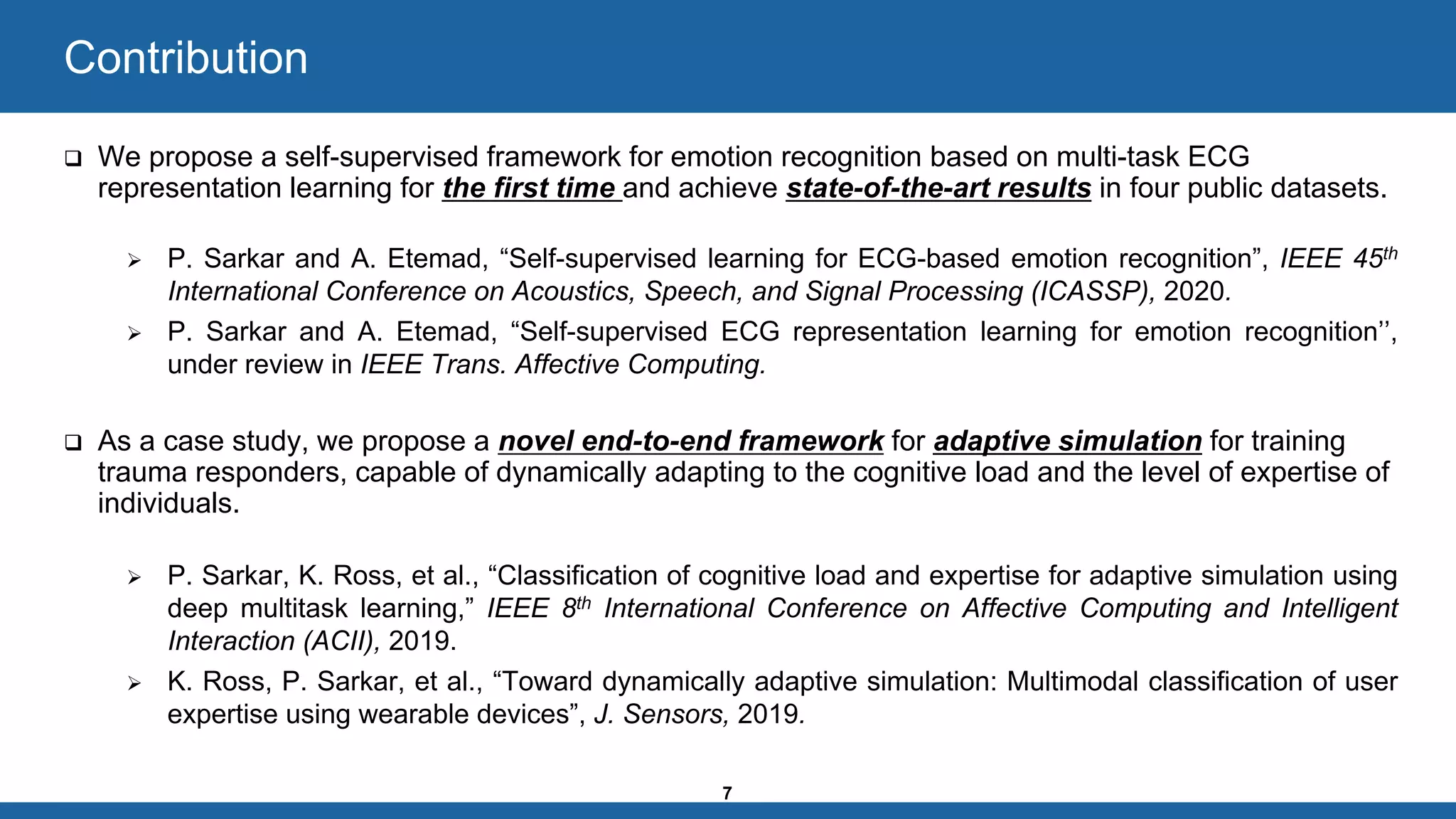
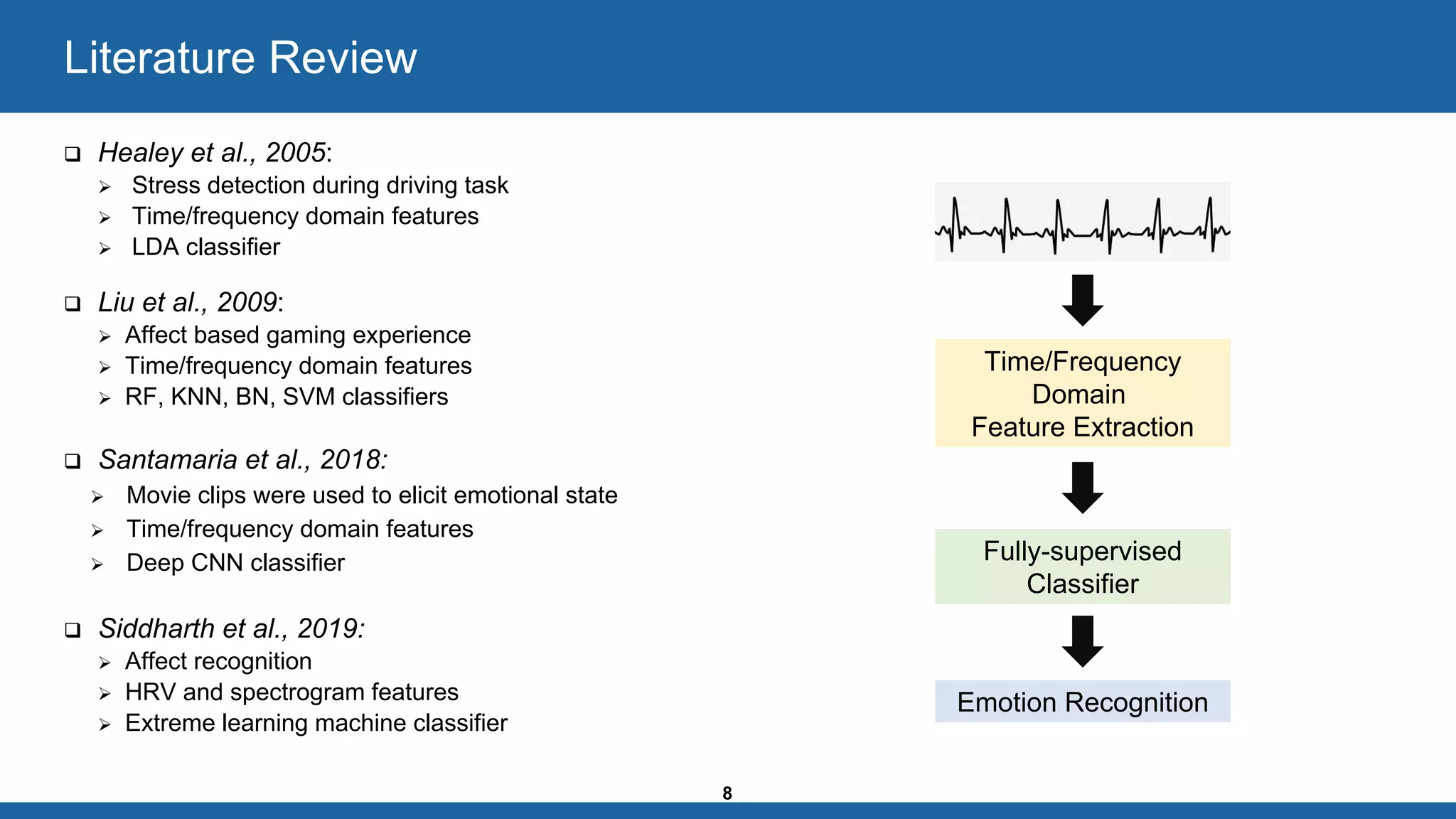
![9
Proposed Framework
Stage 1: Pretext Task
Stage 2: Downstream Task
Transformation
Multi-task Self-supervised Network
[Xj, Pj]
Emotion Recognition
[RECG,yi]
Pseudo
Labels
Learned ECG Representation
Unlabelled
ECG
Transformed
ECG
ECG
Our proposed framework.
Affective
ECG](https://image.slidesharecdn.com/pritamsarkarmascthesispresentationaiim-200505021103/75/Self-supervised-ECG-Representation-Learning-for-Affective-Computing-9-2048.jpg)
![10
❑ Noise Addition [SNR = 15]
❑ Scaling [scaling factor = 0.9]
❑ Negation
❑ Temporal Inversion
❑ Permutation [no. of segments = 20]
❑ Time-warping [no. of segments=9,
stretching factor = 1.05]
Transformations
A sample of an original ECG signal with the six transformed
signals along with automatically generated labels are presented.](https://image.slidesharecdn.com/pritamsarkarmascthesispresentationaiim-200505021103/75/Self-supervised-ECG-Representation-Learning-for-Affective-Computing-10-2048.jpg)
